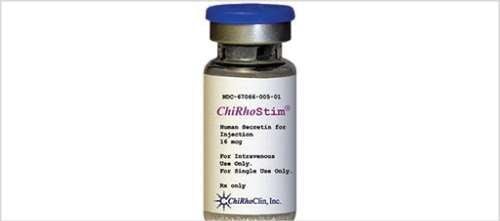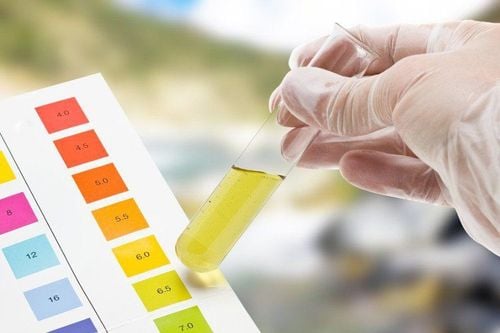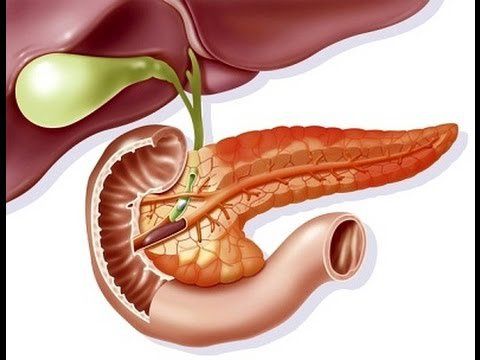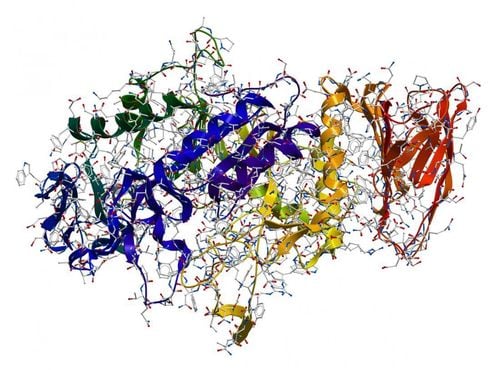This is an automatically translated article.
The article is professionally consulted by Master, Doctor Do Thi Hoang Ha - Doctor of Biochemistry - Laboratory Department - Vinmec Hai Phong International General Hospital.Amylases are a group of enzymes produced mainly by the pancreas and salivary glands, along with partly in the liver, the lining of the small intestine, the ovaries, and the fallopian tubes. Amylase test helps detect diseases of pancreas, liver, salivary glands...
1. What is an amylase test?
The amylase test is a test used to measure amylase enzyme activity in a blood sample taken from a vein or in a urine sample.
There are 2 methods of amylase test:
Blood test: In the blood, amylase activity increases for a short time (peaks after 24 hours and returns to normal after 2-3 days). Urinalysis: Urine amylase activity may continue to be high for 7-10 days after acute pancreatitis.
2. When should amylase be tested?
You should perform amylase test in the following cases:Suspect acute pancreatitis and other pancreatic diseases when symptoms such as: heaviness in the abdomen, back pain, fever, nausea, vomiting and loss of appetite Differential diagnosis of abdominal pain due to acute pancreatitis from abdominal pain requiring surgical treatment of other causes. Cases of jaundice of unknown origin See if treatments for pancreatitis and other pancreatic diseases are effective Measure amylase activity in ascites or pleural fluid (increased amylase activity in these fluids suggests effusion of pancreatic origin) Check for swelling and inflammation of the salivary glands.
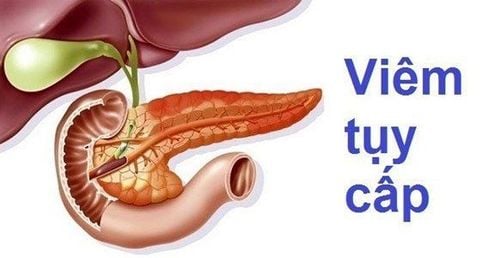
3. Procedure for testing
3.1 Before the amylase test Before the amylase test, you must not drink alcohol for 24 hours. Do not eat or drink anything except plain water for at least 2 hours before the blood amylase test. Drink enough fluids during a urine amylase test to avoid dehydration. Tell your doctor about all the medicines you are taking because many drugs can affect the results of this test. 3.2 Procedure for performing the amylase test Blood amylase test
Step 1: The nurse will wrap an elastic band around your arm to stop the flow of blood, making the veins under the bandage larger and drawing blood into the vein more easily. Step 2: Disinfect the injection site with alcohol. Step 3: Insert the needle into the vein (it may take several times). Step 4: Fill the syringe with blood. Step 5: Remove the elastic bandage from your arm when enough blood has been drawn. Step 6: Place a piece of gauze or cotton wool on the puncture site when the needle is withdrawn. Apply pressure to the injection site and then cover. Urine amylase test: Amylase can be measured in two ways, in a 24-hour or 2-hour urine sample with the following procedure:
For a 24-hour urine sample is all your urine for a 24-hour period Now, the procedure is as follows:
Step 1: You start collecting your urine sample in the morning but it is not recommended to collect your urine sample immediately after waking up (abandon the first yard and start collecting from the second yard). You should make a note to mark the time you start collecting your 24-hour urine collection. Step 2: Over the next 24 hours, collect all of your urine. Your doctor will give you a large container that holds about 1 gal (4 l). The container has a small amount of preservative in it. You should urinate into a small, clean container, and then pour your urine into a large container. Do not touch the inside of the container with your fingers. Step 3: Keep the large container in the refrigerator for 24 hours if the container is free of preservatives. If a preservative is used, it does not need to be refrigerated. Step 4: You should empty your bladder for the last time at or just before the end of the 24-hour period, add this urine to a large container and record the time. Remember that toilet paper, pubic hair, stool, menstrual blood, or other impurities should not be placed in the urine sample. Similar to the procedure above, for a 2-hour urine sample, you should collect a urine sample over a 2-hour period.
3.3 After doing an amylase test Very few problems arise from venous blood sampling. You may have a small bruise at the site where the blood was drawn. However, you can reduce the risk of bruising by applying pressure in place for a few minutes. In rare cases, a vein may swell after blood is drawn. This problem is called phlebitis. You should use a warm compress several times a day to deal with this. If you have a clotting disorder, you may experience ongoing bleeding. Certain medications such as aspirin, warfarin (Coumadin®), and other anticoagulants can increase the risk of ongoing bleeding. If you are bleeding, have clotting problems, or are taking anticoagulants, let your doctor know before having your blood drawn.
4. Amylase test results

Average blood amylase value 22-80U/L (laboratory results can vary between normal range amylase results. Some labs define normal as 22. -80U/L, while other places 40-140 U/l are considered normal). Average urine amylase 42-321U/L. Amylase test results are elevated in the following cases:
Acute or chronic pancreatitis: In acute pancreatitis, the alpha amylase level in the blood usually increases 4-6 times the reference value and is often high but with lipase concentration. Pancreatic duct obstruction and pancreatic cancer. Elevated levels of amylase in the peritoneal fluid can occur in acute pancreatitis but can also occur in other abdominal disorders, such as bowel obstruction or reduced blood flow to the intestines (infarction), perforation of an ulcer. stomach and duodenum. Amylase is also elevated in chronic pancreatitis often associated with alcoholism, trauma, and pancreatic duct obstruction. A ruptured ectopic pregnancy (ectopic pregnancy). Drug-induced acute pancreatitis (corticosteroids, dexamethasone, mercaptopurine, furocemide...). Acute alcohol poisoning. Diseases of the biliary tract: common bile duct stones, acute cholecystitis... End stage renal failure. Salivary gland disease: Acute or chronic inflammation of the salivary glands. Salivary duct obstruction. Mumps. Decreased amylase test results in the following situations:
Decreased blood amylase levels in a person with symptoms of pancreatitis may indicate permanent damage to the amylase-producing cells of the pancreas. Severe liver damage: Toxic hepatitis, liver failure or severe burns. Preeclampsia: This is a condition that occurs when you have high blood pressure and are pregnant. This condition is also known as toxemia of pregnancy. Currently, Vinmec International General Hospital performs blood Amylase test and urine Amylase test to help diagnose pancreatitis and some other diseases.
Please dial HOTLINE for more information or register for an appointment HERE. Download MyVinmec app to make appointments faster and to manage your bookings easily.





